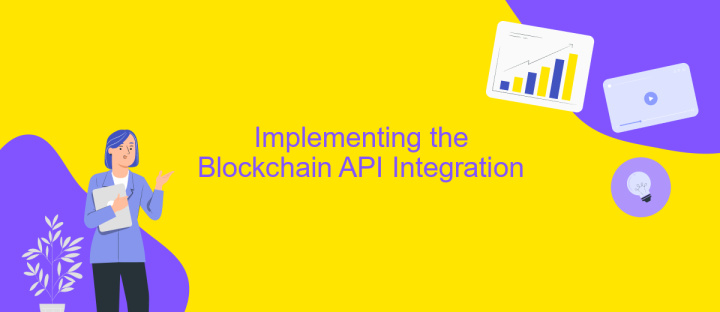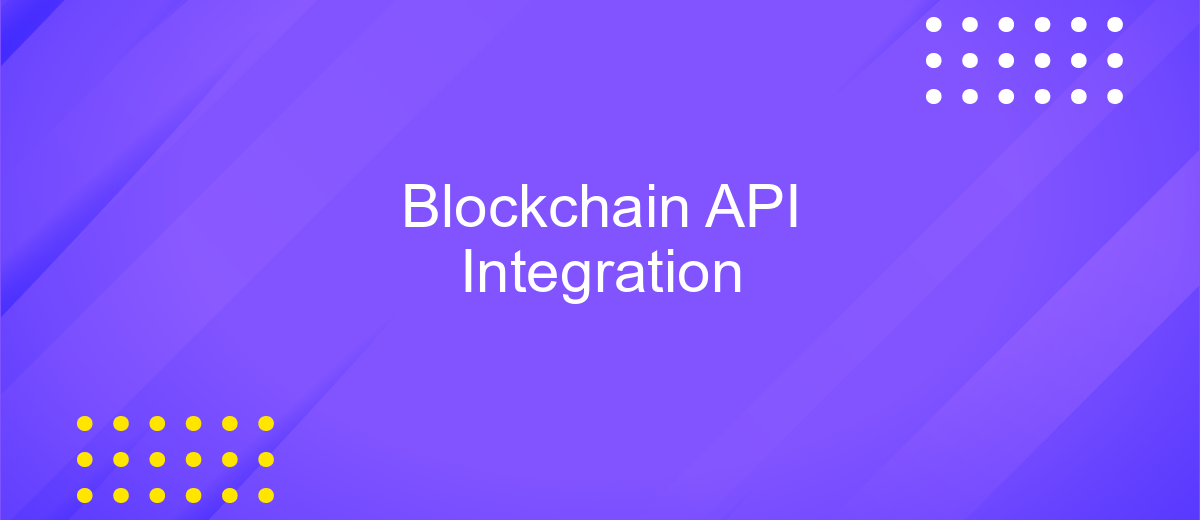Blockchain API Integration
In the rapidly evolving digital landscape, blockchain technology has emerged as a transformative force across various industries. Integrating Blockchain APIs enables businesses to seamlessly connect with decentralized networks, enhancing transparency, security, and efficiency. This article explores the fundamentals of Blockchain API integration, highlighting its significance in streamlining operations and unlocking new opportunities for innovation in sectors ranging from finance to supply chain management.
Understanding Blockchain APIs and Their Capabilities
Blockchain APIs are essential tools that enable developers to interact with blockchain networks seamlessly. These APIs provide a bridge between traditional applications and decentralized blockchain systems, allowing for the integration of blockchain functionalities into existing software. By leveraging blockchain APIs, developers can access blockchain data, execute transactions, and manage smart contracts without needing to understand the underlying complexities of blockchain technology.
- Data Retrieval: Access real-time blockchain data, such as transaction histories and account balances.
- Transaction Management: Initiate and monitor blockchain transactions securely and efficiently.
- Smart Contract Interaction: Deploy, manage, and interact with smart contracts on various blockchain platforms.
- Security Features: Utilize built-in security protocols to ensure data integrity and confidentiality.
- Scalability Support: Handle large volumes of transactions with high performance and reliability.
Understanding the capabilities of blockchain APIs is crucial for developers aiming to integrate blockchain technology into their applications. These APIs not only simplify the interaction with blockchain networks but also enhance the functionality and security of applications. As blockchain technology continues to evolve, the role of APIs in facilitating seamless integration will become increasingly important, driving innovation across various industries.
Choosing the Right Blockchain API for Your Needs

When selecting a Blockchain API, it's crucial to evaluate your specific needs and objectives. Consider the type of blockchain technology you are working with, such as Bitcoin, Ethereum, or others, and ensure the API supports it. Assess the API's functionality, including transaction handling, data retrieval, and security features. It's also important to consider the API's scalability and performance to ensure it can handle your project's demands as it grows. Additionally, examine the documentation and community support available, as these resources can significantly impact your development process.
Another key factor is ease of integration. Platforms like ApiX-Drive can simplify the integration process by offering user-friendly tools and automation capabilities. ApiX-Drive allows you to connect various applications without extensive coding, which can be particularly useful if you're aiming to streamline operations. Evaluate the cost structure of the API, considering both initial setup and ongoing usage fees, to ensure it fits within your budget. Ultimately, choosing the right Blockchain API involves balancing technical requirements with practical considerations to achieve seamless and efficient integration.
Implementing the Blockchain API Integration

Integrating a Blockchain API into your application can significantly enhance its functionality by providing access to decentralized networks. The process begins with selecting a suitable Blockchain API provider that aligns with your project requirements. Ensure that the API offers comprehensive documentation and support to facilitate seamless integration.
- Register for an API key with your chosen Blockchain API provider to authenticate your requests.
- Set up the development environment by installing necessary libraries or SDKs provided by the API.
- Establish a connection to the Blockchain network using the API endpoints, ensuring secure data transmission.
- Implement functions to interact with the Blockchain, such as querying transaction data or sending digital assets.
- Test the integration thoroughly to ensure all functionalities perform as expected and handle errors gracefully.
Once the Blockchain API integration is complete, you can leverage the decentralized features of Blockchain technology within your application. This integration not only enhances security and transparency but also opens up new opportunities for innovation. Regularly update your implementation to accommodate any changes in the API or Blockchain protocols to maintain optimal performance.
Testing and Debugging the Integration

Testing and debugging the integration of a Blockchain API is crucial to ensure seamless functionality and reliability. Begin by setting up a controlled testing environment that mirrors the production setup. This allows you to identify potential issues without affecting live operations. Utilize testnet versions of blockchains, which provide a safe space to experiment with API calls and responses.
Once your environment is ready, conduct comprehensive testing to cover all possible scenarios. This includes testing for successful transactions, handling of failed transactions, and edge cases that might occur due to network latency or unexpected input. Automated testing tools can be beneficial in running repetitive tests efficiently.
- Verify API key authentication and permissions.
- Test endpoint responses for accuracy and consistency.
- Simulate network failures and evaluate error handling.
- Check data integrity across transactions.
- Monitor transaction times and throughput.
After testing, debugging is the next critical step. Use logging and monitoring tools to identify and resolve any issues. Logs provide insights into API interactions and help pinpoint the source of errors. Regularly update and maintain the integration to adapt to any changes in the blockchain protocol or API specifications.


Security Considerations and Best Practices
When integrating Blockchain APIs, ensuring security is paramount. Begin by implementing robust authentication methods such as OAuth or API keys to control access. Regularly update and patch your software to protect against vulnerabilities. Encrypt sensitive data both in transit and at rest using protocols like TLS and AES. Additionally, employ rate limiting to prevent abuse and potential denial-of-service attacks. Monitoring and logging API activities can help detect suspicious behavior early, allowing for timely interventions.
Adopting best practices also involves choosing reliable integration platforms like ApiX-Drive, which can simplify and secure the process. ApiX-Drive offers automated workflows that minimize human error and enhance security through consistent operations. Ensure that all API endpoints are well-documented and adhere to the principle of least privilege, granting minimal access necessary for functionality. Regular security audits and penetration testing can further bolster your defenses, ensuring your Blockchain API integrations remain secure and resilient against evolving threats.
FAQ
What is a Blockchain API Integration?
How can Blockchain API Integration benefit my business?
What are the common challenges in Blockchain API Integration?
How do I get started with Blockchain API Integration?
What should I consider when choosing a Blockchain API provider?
Apix-Drive is a simple and efficient system connector that will help you automate routine tasks and optimize business processes. You can save time and money, direct these resources to more important purposes. Test ApiX-Drive and make sure that this tool will relieve your employees and after 5 minutes of settings your business will start working faster.

